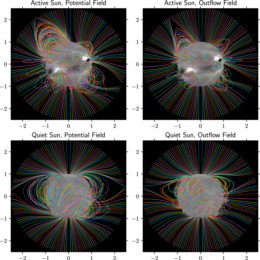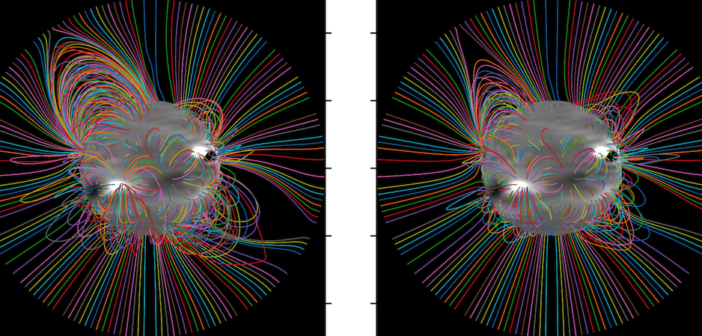
Simulated magnetic fields under high solar activity (top row) and low solar activity (bottom row) conditions. The left column shows the results with no outflow, while the right column shows the resulting magnetic field when a solar wind with a velocity of 150 kilometers per second is included. Click to enlarge. [Rice & Yeates 2021]
Solar physicists have a magnetic flux problem: current models of the magnetic field threaded through the Sun’s million-degree upper atmosphere, or corona, struggle to reproduce the observed amount of open magnetic flux — the field lines that extend from the Sun’s surface into the solar system, carrying solar plasma far afield. Now, Oliver Rice and Anthony Yeates (Durham University, UK) have found a way to lessen the discrepancy between models and observations without increasing the computational cost by incorporating an outward-flowing solar wind into their model. As the simulation results above and to the right show, introducing a solar wind component draws the magnetic field lines outward, increasing the number of magnetic field lines that extend outward into the solar system and decreasing the number of loops that double back toward the Sun’s surface. While the addition of a solar wind component doesn’t fully relieve the tension between models and observations, the authors are hopeful that future developments, such as incorporating more realistic spatial variations of the solar wind, will further improve the outcome. To learn more, see the full article below.
Citation
“Global Coronal Equilibria with Solar Wind Outflow,” Oliver E. K. Rice and Anthony R. Yeates 2021 ApJ 923 57. doi:10.3847/1538-4357/ac2c71

